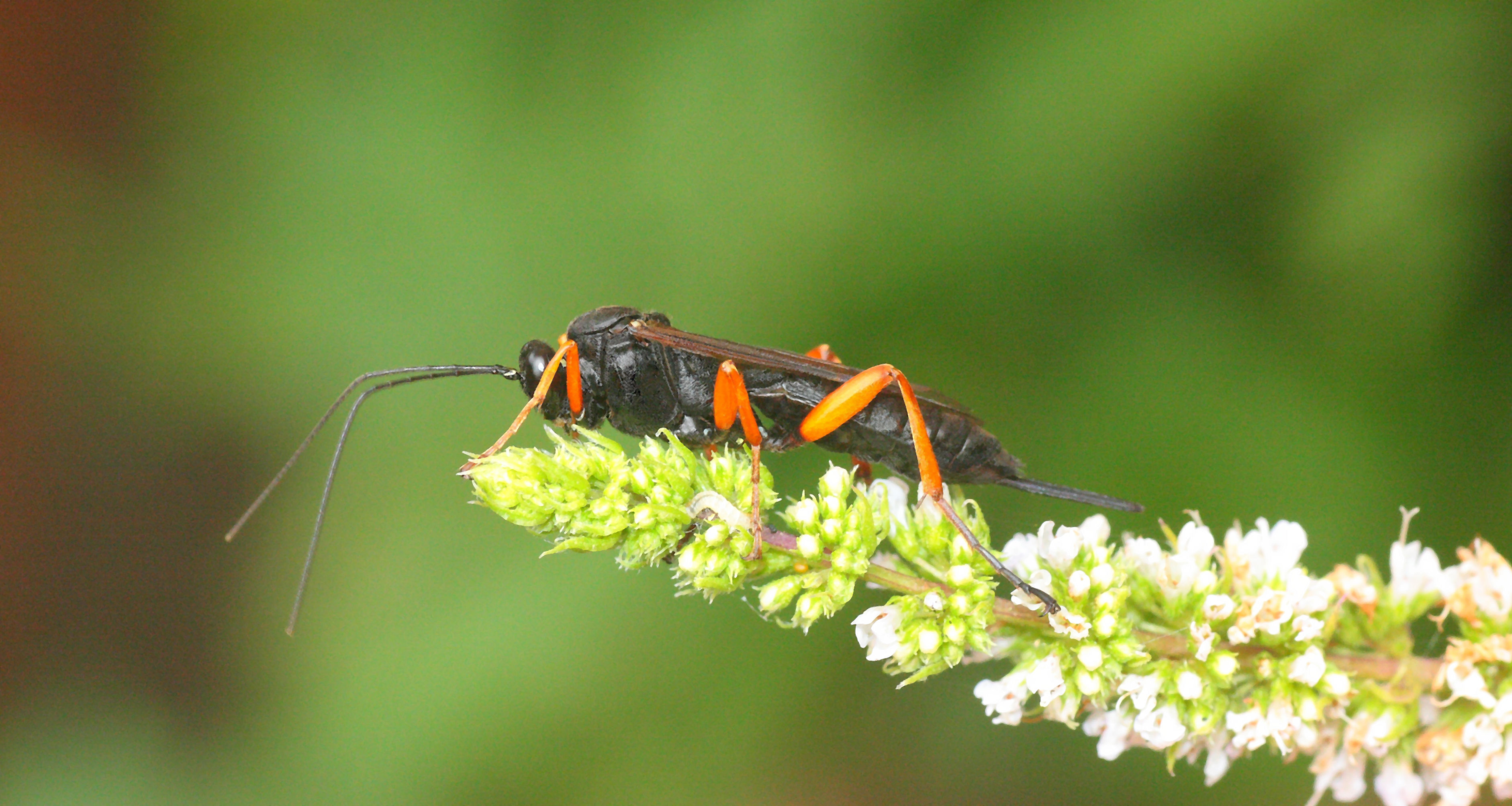DESCRIPTION: Length up to 15mm. A slender bodied wasp with black and orange legs. The hind legs are noticeably larger and the females ovipositor is short, straight and thick. BEHAVIOUR: This parasitoid of butterfly and moth larvae and pupae has been the subject on various experiments which shows that when egg laying a preference is had for smooth larvae over rough and cylinder shapes that have closed ends rather than open are usually chosen. Full understanding of these factors has not been achieved but it does indicate the wasp using its antennae to make vibrations and assess the suitability of the host. Colour is seemingly an important factor in host choice too. Pimpla rufipes goes through five stages as a larva. At its first instar, the larva is already very big,which is why the female can only carry few eggs at a time. DISTRIBUTION: Common and widespread but full distribution not understood due to lack of records. HABITAT: Hedgerows, field margins or other heavily vegetated areas. PERIOD: July to October.

